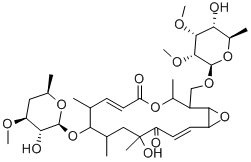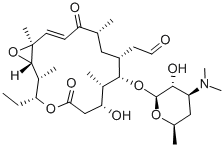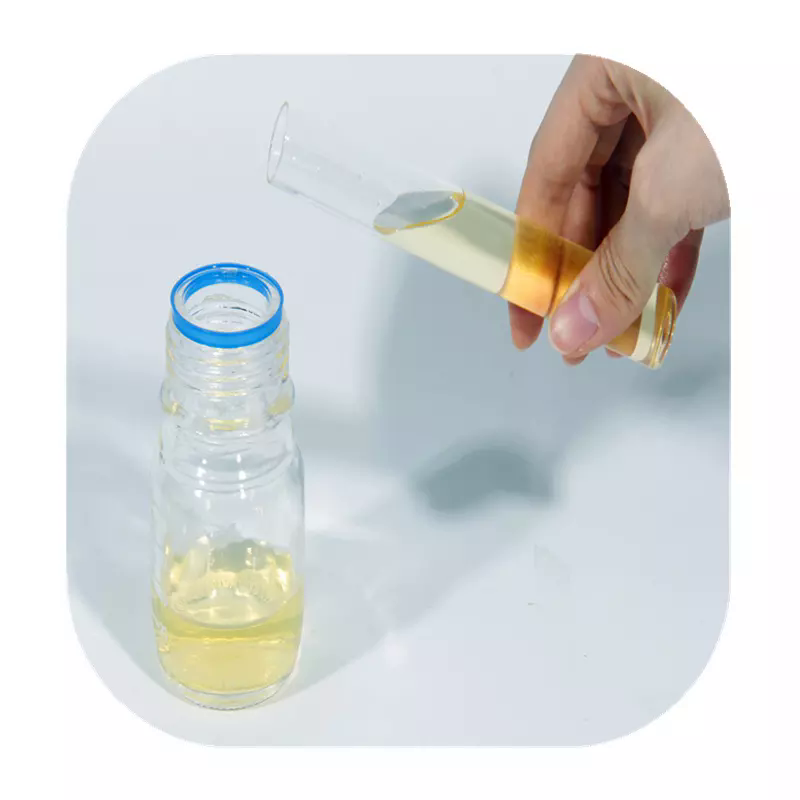BUTADIENE MONOXIDE
Synonym(s):2-Vinyloxirane;3,4-Epoxy-1-butene;Butadiene monoxide
- CAS NO.:930-22-3
- Empirical Formula: C4H6O
- Molecular Weight: 70.09
- MDL number: MFCD00005149
- EINECS: 213-210-4
- SAFETY DATA SHEET (SDS)
- Update Date: 2024-12-18 14:15:30

What is BUTADIENE MONOXIDE?
Chemical properties
clear colorless to light yellow liquid
The Uses of BUTADIENE MONOXIDE
Butadiene monoxide is used as key starting material for the synthesis of (-)-bulgecinine and (+)-broussonetine G.
General Description
Clear light yellow liquid.
Air & Water Reactions
Highly flammable. Water soluble.
Reactivity Profile
BUTADIENE MONOXIDE may be sensitive to heat. BUTADIENE MONOXIDE can react with oxidizing materials. . Epoxides are highly reactive. They polymerize in the presence of catalysts or when heated. These polymerization reactions can be violent. Compounds in this group react with acids, bases, and oxidizing and reducing agents. They react, possibly violently with water in the presence of acid and other catalysts.
Health Hazard
ACUTE/CHRONIC HAZARDS: BUTADIENE MONOXIDE emits acrid fumes when heated to decomposition.
Fire Hazard
BUTADIENE MONOXIDE is flammable.
Safety Profile
A poison by intraperitoneal route. Questionable carcinogen with experimental tumorigenic data. Mutation data reported. A very dangerous fire hazard when exposed to heat or flame; can react with oxidzing materials. To fight fire, use CO2, dry chemical, water spray. When heated to decomposition it emits acrid smoke and fumes.
Properties of BUTADIENE MONOXIDE
| Melting point: | -135 °C |
| Boiling point: | 65-66 °C(lit.) |
| Density | 0.87 g/mL at 25 °C(lit.) |
| refractive index | n |
| Flash point: | −58 °F |
| storage temp. | 2-8°C |
| solubility | Miscible with ethanol, ethyl ether, benzene and organic solvents. |
| form | clear liquid to slightly cloudy liquid |
| color | Colorless to Light orange to Yellow |
| Sensitive | Moisture Sensitive |
| BRN | 103170 |
| CAS DataBase Reference | 930-22-3(CAS DataBase Reference) |
| EPA Substance Registry System | 1,2-Epoxy-3-butene (930-22-3) |
Safety information for BUTADIENE MONOXIDE
| Signal word | Danger |
| Pictogram(s) |
 Flame Flammables GHS02  Exclamation Mark Irritant GHS07 |
| GHS Hazard Statements |
H225:Flammable liquids H302:Acute toxicity,oral H319:Serious eye damage/eye irritation |
| Precautionary Statement Codes |
P210:Keep away from heat/sparks/open flames/hot surfaces. — No smoking. P305+P351+P338:IF IN EYES: Rinse cautiously with water for several minutes. Remove contact lenses, if present and easy to do. Continuerinsing. |
Computed Descriptors for BUTADIENE MONOXIDE
| InChIKey | GXBYFVGCMPJVJX-UHFFFAOYSA-N |
BUTADIENE MONOXIDE manufacturer
ALS INDIA LIFE SCIENCES
New Products
(S)-3-Aminobutanenitrile hydrochloride 4-Methylphenylacetic acid N-Boc-D-alaninol N-BOC-D/L-ALANINOL Tert-butyl bis(2-chloroethyl)carbamate N-octanoyl benzotriazole 3-Morpholino-1-(4-nitrophenyl)-5,6-dihydropyridin- 2(1H)-one Furan-2,5-Dicarboxylic Acid S-2-CHLORO PROPIONIC ACID ETHYL ISOCYANOACETATE 2-Bromo-1,3-Bis(Dimethylamino)Trimethinium Hexafluorophosphate 4-IODO BENZOIC ACID 3-NITRO-2-METHYL ANILINE 1-(2,4-DICHLOROPHENYL) ETHANAMINE (2-Hydroxyphenyl)acetonitrile 4-Bromopyrazole 5,6-Dimethoxyindanone 2-(Cyanocyclohexyl)acetic acid 4-methoxy-3,5-dinitropyridine 1-(4-(aminomethyl)benzyl)urea hydrochloride 2-aminopropyl benzoate hydrochloride diethyl 2-(2-((tertbutoxycarbonyl)amino) ethyl)malonate tert-butyl 4- (ureidomethyl)benzylcarbamate Ethyl-2-chloro((4-methoxyphenyl)hydrazono)acetateRelated products of tetrahydrofuran







![1-(1,5-DIMETHYLHEXYL)-9A,11A-DIMETHYL-1,2,2A,5,5A,6,7,8,9,9A,9B,10,11,11A-TETRADECAHYDRONAPHTHO[1',2':6,7]INDENO[1,7A-B]OXIREN-7-YL BENZOATE](https://img.chemicalbook.in/CAS/GIF/62324-19-0.gif)
You may like
-
 930-22-3 3,4-Epoxy-1-butene 98%View Details
930-22-3 3,4-Epoxy-1-butene 98%View Details
930-22-3 -
 Butadiene monoxide 95% CAS 930-22-3View Details
Butadiene monoxide 95% CAS 930-22-3View Details
930-22-3 -
 1,3-Butadiene Monoepoxide CAS 930-22-3View Details
1,3-Butadiene Monoepoxide CAS 930-22-3View Details
930-22-3 -
 Butadiene monoxide CAS 930-22-3View Details
Butadiene monoxide CAS 930-22-3View Details
930-22-3 -
 3,4-Epoxy-1-butene CAS 930-22-3View Details
3,4-Epoxy-1-butene CAS 930-22-3View Details
930-22-3 -
 1975-50-4 98%View Details
1975-50-4 98%View Details
1975-50-4 -
 14714-50-2 (2-Hydroxyphenyl)acetonitrile 98+View Details
14714-50-2 (2-Hydroxyphenyl)acetonitrile 98+View Details
14714-50-2 -
 118753-70-1 98+View Details
118753-70-1 98+View Details
118753-70-1